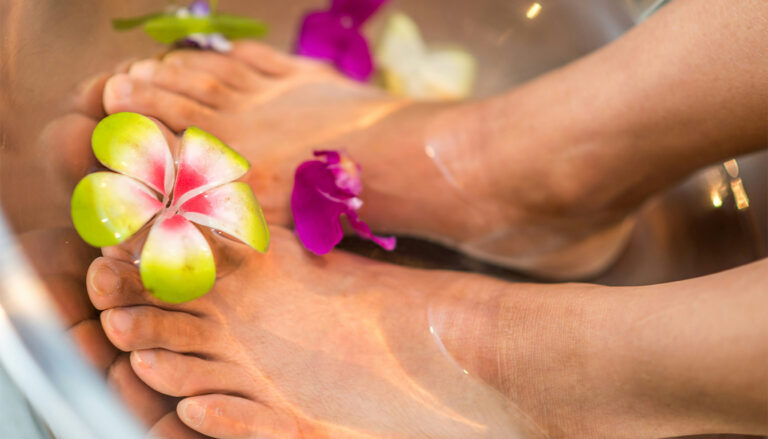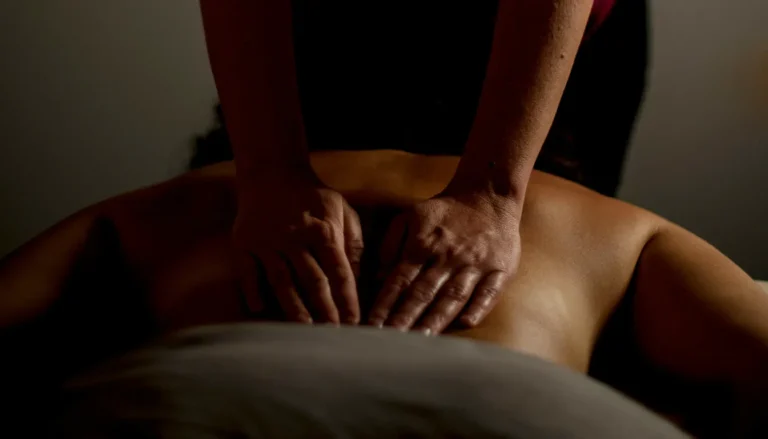This short guide helps people in the UK choose an approach that suits their symptoms and lifestyle.
The NHS now recognises massage therapy as a complementary option to manage common signs of tension. Studies show touch can cut cortisol and raise endorphins, with average cortisol drops around 22% and many reporting less anxiety after sessions.
With over a dozen common styles—from Swedish and hot stone to deep tissue and reflexology—choosing the right approach can feel overwhelming. This guide explains how simple touch-based techniques support the body’s natural calming response, and why demand has grown across the UK.
You will get practical, expert signposting on when to pick soothing full-body work for general calm and when to choose targeted methods to ease tight muscles, sleep trouble or persistent anxiety. We also stress that therapy complements medical care and that qualified practitioners matter.
Key Takeaways
- Research shows hands-on care can reduce cortisol and aid relaxation.
- Different techniques suit different symptoms; match therapy to need.
- The NHS recognises massage therapy as a complementary option.
- Choose a qualified practitioner and discuss medical history first.
- Simple preparation boosts the session experience and aftercare.
The science of massage stress relief in the UK today
Hands-on approaches can nudge the nervous system towards calm and restore balance. Clinical studies show these methods lower cortisol by about 22% on average while promoting endorphins that lift mood and reduce tension.
How touch lowers cortisol and boosts endorphins
Stimulation of the parasympathetic system helps the body move into a “rest-and-digest” state. Improved circulation and gentle effects on soft tissue cut muscle guarding and change how tightness feels during and after a session.
NHS and NICE perspectives on complementary therapy
The NHS recognises manual therapies as a complementary option in certain cases, and NICE includes non-drug approaches in guidance for chronic pain. That cautious endorsement supports safe, evidence-based use alongside medical care.
Why adoption is rising across the UK
With heavier workloads and more screen time, people seek a non-pharmacological way to decompress. Regular, short sessions often build momentum for better sleep and reduced anxiety over time.
“Discussing conditions, medications and preferences openly helps ensure a safe, effective plan.”
For practical next steps, see our guide to finding the right treatment.
What massage is best for stress: how to match your symptoms to the right therapy
Different patterns of tension respond better to particular hands-on approaches. Below are practical suggestions to match common signs with suitable types of treatment.
If you feel generally anxious and tense: relaxation-led options
Choose Swedish or aromatherapy to promote whole-body calm. These types use long, rhythmic strokes and gentle pressure to encourage relaxation and lower arousal during a session.
If you have chronic neck, back or shoulder tightness: deeper layers and pressure work
For stubborn upper body tension, sports or soft-tissue approaches reach deeper layers. A focused technique that uses firmer pressure can reduce guarding in the neck and upper back.
If you get headaches or jaw/temple tightness: targeted techniques and specific points
Indian head and scalp work, plus face and upper shoulder sequences, often ease referral pain linked to headaches. Specific point work can provide fast local relief.
If sleep is the main issue: soothing modalities that calm the nervous system
Slow, rhythmic full-body work helps downshift the nervous system. Pair a calming session with simple evening breathing to support better sleep between appointments.
If you’re pregnant or have specific health conditions: safe, adapted approaches
Seek therapists trained in prenatal care. Adapted positioning, lighter pressure and clear discussion of health history ensure safe, effective relief.
- Blended sessions mix Swedish strokes with targeted deeper work to calm and treat hotspots in one visit.
- Abdominal-focused techniques can gently support digestive tension and the enteric nervous system when done carefully.
- Tell your therapist which areas you want prioritised and how long you can book to get the most from a session.
Relaxation-first therapies: Swedish, hot stone and aromatherapy for calm
Relaxation-led therapies offer a gentle route to unwind after a busy week. These approaches focus on rhythmic strokes, comforting warmth and scent to lower arousal and support better sleep. They suit anyone who wants a soothing session rather than firm, targeted work.
Swedish: classic techniques for whole-body relaxation
Expect 60–90 minutes with strokes such as effleurage, petrissage, tapotement, friction and vibration. Therapists use flowing movements and light joint mobilisation to boost circulation and ease muscle guarding. The overall experience aims to calm the nervous system without heavy pressure.
Hot stone: thermotherapy for deeper comfort
Hot stone treatments use smooth basalt stones heated to around 55°C. The warmth helps tissues relax so therapists can deliver a feeling like deeper work while keeping strokes gentle. Stone massage gives a cosy, grounding sensation that often enhances relaxation.
Aromatherapy: choosing essential oils to lift mood
Blends such as lavender for calm and bergamot to lift mood are common. Oils are diluted and applied by a trained therapist to ensure safety and a pleasant experience. Combined with Swedish or hot stone approaches, aromatherapy adds a multi-sensory layer to promote longer-lasting relief.
When to choose these over deeper approaches
- Opt for relaxation-first therapy when anxiety is high or sleep is poor.
- Choose lighter work during recovery, pregnancy or sensitive periods.
- These options suit newcomers who want reassurance and gentle care.
- Practical tips: book 60–90 minutes, ask about room temperature, and drink water after a session to aid recovery.
“Gentle, rhythmic care often resets both mind and body without aggravating sore spots.”
Working into deeper layers: deep tissue, sports and trigger point massage
When tension sits deep, therapists may use firmer, focused techniques to restore movement. These options aim to reach the deeper layers of muscle and fascia and to ease long-standing knots that lighter work won’t shift.
Deep tissue
Deep tissue massage targets deeper structures with controlled pressure, often rated around 4–7/10 on the comfort scale. Short-lived soreness after a session is common. Clear communication keeps the technique effective and tolerable.
Sports approach
Sports methods combine assessment, mobility drills and recovery care to reduce muscle tension and support sleep and performance. UK teams use this regularly to aid recovery and sharpen focus before big events.
Trigger point and myofascial work
Precise pressure deactivates sore spots that can refer pain into the neck and upper back. When integrated into a plan, trigger point technique often reduces headaches and stubborn shoulder bands.
- How tissue work affects fascia and layers muscle connective: improves glide and ease of movement.
- Session tips: pace the work, breathe slowly, then use hydration, gentle movement and heat afterwards.
- When to book: persistent hotspots, repetitive-strain patterns, or if relaxation-only care hasn’t helped.
“Deeper work can still feel calming when finished with a slow, soothing sequence.”
| Approach | Primary focus | Typical sensations |
|---|---|---|
| Deep tissue | Release of long-standing knots in tissue | Firm pressure, short-lived soreness |
| Sports | Recovery, mobility and performance support | Targeted work, movement exercises |
| Trigger point | Pressure to specific points that refer pain | Localized pressure, relief of referred tension |
Complementary styles for stress relief: reflexology, shiatsu, Thai and prenatal
Alternative approaches such as foot-based therapy or assisted stretching suit different preferences and needs.
Reflexology and foot point work
Reflexology sessions (30–60 minutes) apply pressure to mapped specific points feet thought to link to whole-body calm. Trained therapists use firm, targeted pressure specific points to encourage a parasympathetic shift.
Some NHS complementary pathways include short reflexology add-ons as an option. It suits people who prefer focused foot work over a full-body session.
Shiatsu and meridian pressure
Shiatsu uses rhythmic thumb and palm techniques along energy lines. This approach aims to balance the system and has evidence of easing lower back pain and improving wellbeing.
Thai movement and assisted stretches
Thai massage is done clothed, on a mat, combining acupressure and assisted stretching. The sequence opens hips and shoulders and supports mobility after long desk hours.
Prenatal and abdominal-focused care
Pregnancy sessions follow RCOG-aligned safety: side-lying positions and adapted routines. Abdominal-focused work can also be used cautiously outside pregnancy to ease digestive tension.
“Tell your therapist about pressure, boundaries and any discomfort to make the experience personal and safe.”
| Approach | Session length | Main focus | Good for |
|---|---|---|---|
| Reflexology | 30–60 mins | Specific points feet, mapped pressure | Relaxation, gentle systemic calm |
| Shiatsu | 45–60 mins | Rhythmic thumb/palm pressure | Lower back, overall wellbeing |
| Thai massage | 60–90 mins | Assisted stretches, acupressure | Mobility, postural tension |
| Prenatal / abdominal | 30–60 mins | Adapted positioning, gentle abdominal work | Comfort in pregnancy, digestive tension |
Booking in the UK: safety, credentials, costs and making the most of your session
A sensible start to any session is verifying training, registration and practical details. This helps you pick a safe therapist who matches your needs and budget.
Checking qualifications and registers
Look for practitioners on the CNHC or recognised professional associations. Ask about accredited training and public liability insurance.
When to consult your GP and key contraindications
Speak to your GP if you have recent injury, uncontrolled blood pressure, active cancer treatment, pregnancy concerns or complex conditions. Therapists can adapt protocols, but medical clearance may be needed first.
Typical UK prices and planning a routine
Expect typical costs from £45 to £120 per session, depending on location, length and type of therapy. For acute issues, weekly visits at first often help. Then plan maintenance every 3–6 weeks to manage muscle tension and keep gains.
Before and after care
Simple steps extend benefits: arrive hydrated, avoid heavy meals beforehand and tell your therapist about any sensitive areas. After the visit, use gentle movement, warmth and extra fluids to support tissue recovery.
- Verify CNHC listing and ask about specialisms.
- Share medications and medical history when booking.
- Time sessions around work or workouts to avoid strain.
- Track progress between visits to refine your plan.
“Clear communication about pressure, focus areas and health makes every appointment safer and more effective.”
| Item | Typical range | Tip |
|---|---|---|
| Cost per session | £45–£120 | Check length and modality before booking |
| Maintenance plan | 3–6 weeks | Adjust frequency for flare-ups or recovery |
| Aftercare | Hydration, heat, light movement | Avoid heavy lifting for 24 hours |
Conclusion
strong, Aim for a balanced routine that pairs gentle calming sessions with focused deep tissue work when knots persist. Start with relaxation-led approaches such as Swedish, hot stone massage or aromatherapy, then add targeted tissue massage or trigger point care as your body adapts.
Alternate styles over a month to combine overall calm with mechanical release. Keep communication clear about pressure, goals and any sensitivities. Simple aftercare — hydration, gentle movement and warmth — helps results last.
Qualified support matters. If you want targeted foot work or to explore reflexology, you can find a reflexology practitioner who suits your needs. Listen to your body, adjust the plan, and build progress session by session.
FAQ
Which approach helps reduce anxiety and promote relaxation?
Relaxation-led therapies such as Swedish, aromatherapy and hot stone sessions use long, gliding strokes, gentle pressure and calming scents to soothe the nervous system and lower tension. These modalities suit people with generalised anxiety and those seeking rest rather than intense pressure.
How do hands-on treatments affect cortisol and endorphins?
Gentle to moderate manual work can reduce cortisol and increase endorphins and oxytocin, improving mood and lowering heart rate. Mechanisms include parasympathetic activation, reduced muscle spindle activity and improved local circulation, all of which aid mental calm.
Are complementary therapies endorsed by UK health bodies?
The NHS and NICE recognise some complementary approaches as supportive care for wellbeing. They recommend checking evidence and using these therapies alongside medical advice, especially for chronic conditions or when symptoms are severe.
When should someone choose deeper pressure rather than a calming session?
People with persistent neck, back or shoulder tension often benefit from deeper work such as deep tissue or sports techniques. These focus on the deeper muscle and connective tissue layers to release chronic knots and improve mobility, but may cause temporary soreness afterwards.
Which techniques target headaches and jaw tightness?
Targeted approaches including trigger point work, myofascial release and facial/cranial techniques focus on specific points in the neck, temples and jaw. Reflexology can also help via foot points linked to the head, while posture-focused treatments address underlying causes.
What helps when poor sleep is the main issue?
Soothing modalities such as aromatherapy, Swedish and gentle reflexology calm the nervous system and prepare the body for rest. Evening appointments, warm finishes and breathing guidance boost the sleep-promoting effect.
Are there safe options for pregnancy or medical conditions?
Prenatal specialists use adapted positions, lighter pressure and abdominal-safe techniques. Always consult a GP or midwife first and choose therapists with accredited prenatal training and appropriate indemnity insurance.
How does hot stone or thermotherapy help with tension?
Heated stones applied to key areas relax muscles quickly, improve circulation and ease stiffness. Thermotherapy can allow therapists to work more comfortably into tight regions, offering a sensation of deep comfort without heavy pressure.
What do deep tissue and sports approaches aim to achieve?
These styles focus on longer-term structural change: reducing adhesions in deeper layers, improving range of motion and supporting recovery after exertion. They suit active people or those with long-standing patterns of muscular overuse.
How do trigger point and myofascial techniques work?
Therapists apply sustained pressure to specific tender spots to relieve referred pain and restore normal tissue glide. Sessions may be brief but precise, often combined with stretches or home self-care to maintain gains.
What can reflexology, shiatsu and Thai-style work offer?
Reflexology targets feet reflex points linked to organs and relaxation. Shiatsu uses rhythmic pressure along meridians to balance energy and reduce tension. Thai-inspired sessions combine assisted stretches and compression to improve mobility and relieve postural stress.
How do I check therapist credentials in the UK?
Look for CNHC registration or membership of reputable professional bodies such as the Federation of Holistic Therapists, Complementary and Natural Healthcare Council or condition-specific associations. Confirm training hours, insurance and published treatment scope.
When should I consult a GP before booking a session?
Seek medical advice if you have recent surgery, uncontrolled blood pressure, blood clot risk, active cancer, osteoporosis, pregnancy concerns or unexplained symptoms. A GP can advise on safe options and necessary adaptations.
What are typical session costs and how often should I book?
UK prices vary by region and therapist experience; expect a range from modest clinic fees to higher rates in specialist centres. For chronic issues, a short course weekly or fortnightly then monthly maintenance often works well; discuss a plan with your practitioner.
What should I do before and after a session to maximise benefits?
Beforehand, hydrate and avoid heavy meals. After treatment, rest, drink water, use gentle heat if needed and perform suggested stretches or breathing exercises. Light movement helps prevent stiffness once deeper work has been applied.





